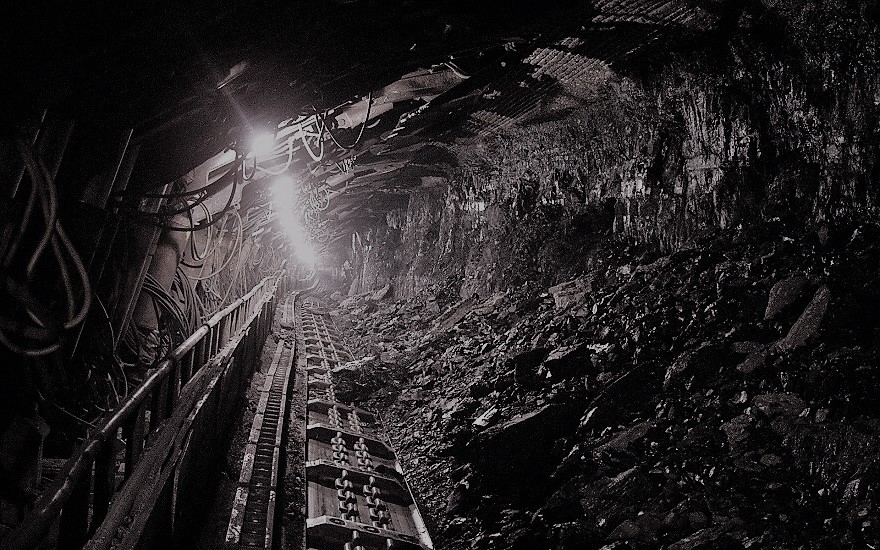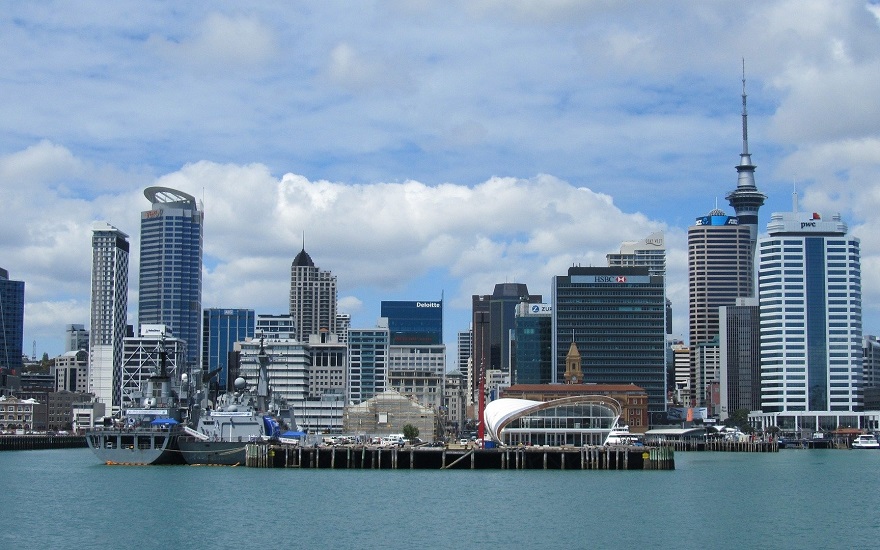The start of 1974 saw much of UK industry operate under a Three Day Week restricting their electricity use.
The period of electricity rationing lasted for more than two months and played a pivotal role in unseating the British government.
While the crisis came to a head thanks to an industrial dispute with coal miners in the midst of a global oil crisis, its true origins date back years or even decades.
In fact, electricity use was rationed just two years before due to fears about potential shortages of coal.
The Background: Major Miners’ Disputes
Before World War II, coal mining languished in 84th place on a league table of the best-paid industrial jobs. But a post-war boom saw this situation change dramatically.
One report found the net income of a miner with a wife and two children in 1957 was roughly 22% higher than an equivalent manufacturing worker. A similar 1960 study revealed miners were paid 7.4% above the average earnings of those working in factories.
Coal was the new gold and it was claimed miners were “enjoying historically unprecedented standards of living”.
This situation didn’t last though. Miners’ pay fell behind other workers during the 1960s and by the end of the decade, earnings were roughly 3% below the average worker in manufacturing.
As Britain headed into the 1970s, high inflation led the Conservative government of the day to impose wage restraint on public sector workers. This sent them headlong into a lengthy and acrimonious dispute with the National Union of Mineworkers (NUM).
At its 1971 annual conference, the trade union proposed a 43% pay rise for its members. At the time, the government was offering workers 7-8% increases. Miners voted to take industrial action if their demands weren’t met.
On 5 January 1972, the NUM’s executive committee rejected another offer from the National Coal Board, the state-owned body running the mining industry.
This led to a worker walkout on 9 January, the first official strike by miners in Britain since 1926. There had been a widespread unofficial strike in 1969.
Miners picketed at coal-fired power stations, before targeting all other major coal users including steelworks and ports to ramp up pressure on the government.
With fuel supplies dwindling, the government declared a state of emergency on 9 February. This included limiting electricity to homes and businesses through rota disconnections, leaving many without power for up to nine hours a day.
Inevitably, this caused great disruption to industry, even forcing some companies out of business. In the two days following the introduction of emergency measures, more than 1.5 million people paid weekly were laid off, doubling the number of unemployed in a matter of hours.
The Central Electricity Generating Board, which oversaw power generation across England and Wales from 1957 until privatisation in the 1990s, had to disconnect 10-15% of the population as well as reduce voltage by 6%.
On 11 February an inquiry headed by Lord Wilberforce (the Wilberforce Inquiry) started to investigate the coal miners’ demands as the strike stretched into its second month.
Negotiations between the NUM and the coal board continued and an agreement was finally reached in the early hours of 19 February.
Miners accepted the new offer in a vote on 25 February and returned to work three days later, ending a seven-week strike that demonstrated how important coal and electricity were to the nation’s economic wellbeing.

Crisis Averted… But For How Long?
Conflict was brewing again by the middle of 1973. The election of Mick McGahey to vice-president had moved the NUM in a more militant direction.
By October inflation was spiralling, resulting in miners’ real-terms wages lagging 2.3% behind the recommendations of the Wilberforce Inquiry.
The NUM’s national conference passed resolutions for 35% wage increases, again well above the limits set by the government.
Around the same time, a global oil crisis was developing. The Organization of Arab Petroleum Exporting Countries enforced a boycott of the United States and an embargo on oil supplies to nations perceived as supporting Israel in the Yom Kippur War.
Compared to other countries such as the Netherlands, Britain wasn’t hugely affected by the embargo. The Edward Heath-led Conservative government refused permission for the US air force to use its military bases.
This stance meant oil supplies to the UK were largely uninterrupted, although the spiralling prices undoubtedly had a knock on effect on the relationship between ministers and the miners. By the end of the embargo in March 1974, the average price of oil had risen nearly 400% from $3 to $12 a barrel.
Come November, the NUM rejected the latest pay offer from the National Coal Board and held a national ballot on another strike. Miners rejected the proposal by almost a 2-to-1 margin (143,006 to 82,631). However, they did enforce an overtime ban aimed at halving coal production.
This move had serious consequences for the UK’s power supplies, with the majority of electricity at the time generated by coal-fired power stations.
On 13 December 1973, Prime Minister Heath announced that from midnight on 31 December, commercial consumption of electricity would be limited to three consecutive days each week.
The measure aimed to prolong the life of available coal stocks rather than risk a complete shutdown of the nation’s power supplies.
Cabinet papers published through the National Archive demonstrate the tricky tightrope the government was walking.
Government must not appear to be working for a major confrontation with the unions on the issue of the Stage 3 Pay Code. It was possible that the Executive of the National Union of Mineworkers (NUM) wanted such a confrontation or that their actions would produce it.
Meanwhile the Government must go ahead with the arrangements to introduce the three-day working week.
The Government must make it clear that the measures were wholly the result of the industrial action by the NUM and ASLEF, and that if that action were brought to an end the oil shortage would persist but the three-day working week would no longer be necessary.
In discussion it was argued that the Government should not appear to use the three-day week as a threat to the unions. The facts must be presented in a low key emphasising the overriding need to meet the fuel shortage.
– Minutes of Cabinet meeting from 20 December 1973
The Reality Of A Three Day Week
The restrictions came into force on 1 January 1974 and lasted until 7 March. Businesses had to limit their electricity use to just three specified consecutive days a week and were banned from operating for long hours on those dates.
Services deemed “essential” were exempt from the action. These included hospitals and supermarkets, along with newspaper printing presses, which were seen as an important mechanism for ensuring the public remained informed of events.
Under the rules the two main TV companies BBC and ITV had to stop broadcasting at 10:30 pm each evening to help conserve electricity, although this limit was lifted on 8 February after the Prime Minister called a General Election – more on that shortly.
After the first few weeks, debate in government focused on whether they could ease the restrictions to let businesses work for five rather than three days. However, ministers came to the conclusion it would be seen as a sign of weakness.
In discussion, it was argued that any relaxation which led to increased electricity consumption would represent a major change of policy. Hitherto the aim had been to restrict consumption to prolong endurance. The miners had always sought to deplete stocks by action short of a strike, and then impose a total strike when the economy was least able to resist it.
Relaxation now, would be seen as a sign of weakness on the part of the Government: the miners would be encouraged in their resolve, since a relaxation would be taken as firm evidence that the economy could not stand a three-day week and that the Government, rather than impose even harsher measures, would quickly settle with them. Public opinion would almost certainly see relaxation in face of the risk of a strike as an act of great imprudence.
On the other hand, it was strongly argued that the restriction of the working week to three days could not be endured much longer. There were signs that many companies, large and small, would soon be in difficulties, and this could have wide repercussions throughout the economy. The trade figures would inevitably get worse if short-time work continued.
The ability of the economy to withstand restrictions was a much more critical factor for the endurance of the country than were the fuel stocks. Moreover to maintain the present restrictions would be seen as a tacit admission that the Government expected the majority of miners to vote for a strike. Such a policy would be interpreted as an intensified form of Government confrontation with the unions and it would provide a continuing excuse for the TUC to maintain their protests.
– Minutes of Cabinet meeting from 24 January 1974
On 24 January, NUM members voted overwhelmingly in favour (81% in support) of a national strike having rejected the National Coal Board’s latest offer of a 16.5% pay increase.
The strike started on 5 February, and with the Three Day Week already into its second month, Prime Minister Heath called a snap election.
Clearly believing that the public sided with the government over the power of trade unions, the Conservatives based its campaign on the slogan “Who governs Britain?”.
They didn’t get the answer they expected, however. While the Conservatives took the largest share of the vote (37.9% to 37.2%), they lost 28 seats and their majority in the House of Commons.
Labour under Harold Wilson gained the most seats (301 versus 297) and formed a minority government. It immediately increased miners’ wages by 35%.
The Three Day Week ended on 7 March with normal working patterns returning from 8 March, although certain restrictions on electricity use remained in force for several weeks.
Long-Term Impact Of The Three Day Week
The incident cast a long shadow over the UK for the next decade. Another General Election followed in October, which saw Labour gain a slim majority of three following a campaign where it made great capital out of its role in ending the miners’ strike.
But the administration was hit by an economic crisis that led to Prime Minister James Callaghan applying for a loan from the International Monetary Fund (IMF).
The 1979 General Election campaign was played out in the months following the Winter of Discontent, another period marred by industrial disputes and strikes.
Labour, the governing party, ran advertising campaigns reminding voters of the Three Day Week. It carried the slogan “Remember the last time the Tories said they had all the answers?”.
While the Conservatives played heavily on the government’s response – or perceived lack of response – to the Winter of Discontent and rising unemployment.
It’s famous “Labour isn’t Working” slogan combined with the image of a lengthy queue of people signing on at the dole office, proved victorious at the ballot box, ushering Margaret Thatcher into Downing Street as the new Prime Minister.
Thatcher, who was a member of the Heath government back in 1974, learned lessons from the Three Day Week and ensured coal supplies were well stocked ahead of the next major dispute with the miners in 1984-85.
Could the Three Day Week happen today? As our power grid transitions away from coal to renewables, it appears unlikely.
But there are plenty of other threats to the continuity of the nation’s electricity supplies. And there are mechanisms in place, such as load shedding, to ration power should the need arise.





To think miners would be worried about richer people paying extra surtax on income from property shows how out of touch Fred Catherwood was here. As the Union leader put it, as a result of announcing the 3 day working week, there were then going to be millions of people earning lower wages, as a result of only being paid for 3 days work a week, the other 2 days being made up with much lower dole money.
At the time, I was, as part of my Degree Course, working at a chemical factory in King’s Lynn Norfolk, we got 65% of power as we were classed as a continuous processing plant. Our department only worked Monday to Friday, our sole concession to reduce power was to alter the working hours from 8.30 am to 5 pm, with one hour lunch, to 8 am to 4 pm, with a half hour lunch, in order to save power on lights. Big deal, in terms of saving power. Others weren’t so lucky.
In early 1974, the UK faced a Three Day Week due to electricity rationing, driven by coal miners’ strikes and an oil crisis. ⚡⛏️ This period of rationing lasted over two months and contributed to a major political shift. 📉 The roots of the crisis go back to earlier coal shortages and disputes. #EnergyCrisis #UKHistory
You write
“On 5 January 1972, the NUM’s executive committee rejected another offer from the National Coal Board, the state-owned body running the mining industry.
This led to a worker walkout on 9 January, the first official strike by miners in Britain since 1972. ”
This should surely be 1926 . ( see report in PHM ‘Miners’ Strike 1974: a victory for workers’)
I was a teacher at the time and lived in a different catchment area so some days I was in the dark and cold for 6-8 hours a day. I am researching it as I’m trying to fit years to some of my old photos and I have one of my husband trying to read by candle light. So it was 1972 .
Hi Ann, thanks very much for getting in touch and a very good spot! Have corrected that typo now
I was there then. I was working in Aeroquip in Wales, at the time.
So I could only work there for 3 days.
I managed to get a part time job working for 2 days in M&S in the butchery dept, preparing cuts of meat.
This meant I was working 5 days in total.
Then one day, I went in to M&S and was told I wouldn’t be needed any more, as the 3 day week had ended. It was great fun while it lasted!
A key point is the Civil Service Dept, known as the Pay Board with Sir Edward Figgures as Chair, looking at pay of the Coal Miners, the Pay Board been supplied with incorrect figures for Miners wages by the NCB,, an error revealed by the Times newspaper, only a week before the General Election of February 28th 1974, in the light of correct figures, recalculations showed the miners pay claim was within Govt limits ( the Wilberforce Report) this was a bombshell for Heath, Heath had called an unnecessary General Election and the Miners Strike may have been averted. Wth the rug pulled from under his feet, Heath faced the voters, Harold Wilson emerged as PM of a minority government
I remember it so well, my dad needed to support and feed his family Irish worker who worked in a tyre factory,worked on a pig farm to get pennies, every morning mum woke us up with a candle, no heating, lino floor,burnt slack on the fire, school uniform, tried her best to clean and dry this was in Wolverhampton factory closed,no power, no support from a job centre, didn’t exist .
I was there then. I was working in Aeroquip in Wales, at the time.
So I could only work there for 3 days.
I managed to get a part time job working for 2 days in M&S in the butchery dept, preparing cuts of meat.
This meant I was working 5 days in total.
Then one day, I went in to M&S and was told I wouldnt be needed any more, as the 3 day week had ended. It was great fun while it lasted!
I remember it all so well, I was in my second year of my Apprenticeship as a Toolmaker when it all kicked off, we were the luckier of the pick, we were deprived of Power Mon-Wed, so the UB office gave us “dole” for the 3 days we couldn’t work and the two bosses applied for and got permission to run our little Toolroom of 7 employees & 2 Bosses Thu-Sun. All 9 of us, worked all the overtime we were allowed and managed to keep the workflow rolling in 4 days (as opposed to 5 normal days + OT {some evenings and Sat mornings} and kept the little business viable). The Dole office asked which days we had no Power, so we told that our power was off Mon-Wed and were given “Dole Money for those days”. We worked our butts off and with the O/T Rates, Time and a third, Time and a half and Double time, I was getting paid for around 90hrs per week and as we had power over the weekends, I wasn’t out Boozing, instead, was earning Wages at overtime rates, so for 4 days hard work, I was getting about 3x my normal wage for the day back then (which was £12.74 gross back then). I have never been in a Union in my life but Scargill’s antics did right by me (and I expect many others) back then, happy days….
can I have some sources/ references? I’m currently writing a dissertation on the three day week and was wondering if you can provide some references?
Hello Stuart
A good place to start would be some of the links included in the article, this one for example, refers to some of the debates within the Cabinet at the time: https://hatfulofhistory.wordpress.com/2014/01/02/40-years-since-the-beginning-of-the-three-day-week/
Similarly, there are some useful articles in the BBC archives http://news.bbc.co.uk/onthisday/hi/dates/stories/february/16/newsid_2757000/2757099.stm
Good luck with the dissertation!
The Prime Minister was Edward Heath – not Health as per your report. I remember this era and it was very much a communist verses moderate conservatism from both the Conservative and Labour parties. It lead to the destruction of the old manufacturing in the UK.
Hi Jill, thanks for commenting – v good spot on the typo, have now corrected the article.